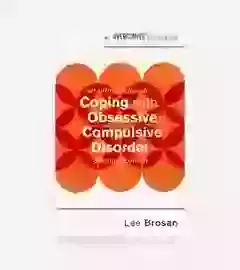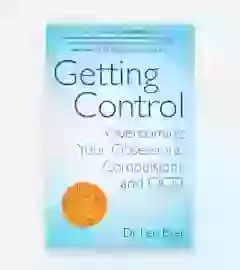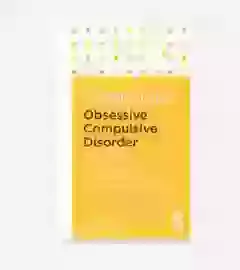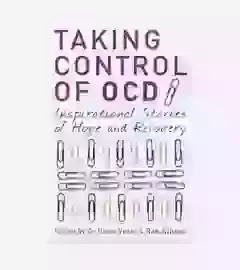What keeps OCD going?
Whatever the factors that might have caused your OCD, it is more helpful to address the mechanisms that maintain it, because this is the key to overcoming the problem. OCD is kept going by a vicious circle of obsession, anxiety and response to anxiety.
One of the first things to understand in what keeps OCD going is the role of avoidance and compulsions in fear. Each time you avoid a situation or activity the behaviour is 'reinforced' because you have escaped the harm that you think might have happened. This reinforcing means that you're more likely to act the same way next time. Compulsions are also reinforced: if you feel less anxious after you check that a light switch is off, you are more likely to act the same way in future. Avoidance and compulsions seem at first to 'work' - you think that you have prevented harm and this stops you feeling anxious. But in the long term, they make you more anxious and fearful because they feed the obsession.
The next thing to understand about OCD is the meaning that you attach to normal experiences. This applies to various different ways of thinking.
Inflated responsibility and magical thinking
If you have OCD you have an inflated sense of responsibility. This means that you believe you have the power to either cause or prevent bad events that are personally important to you. 'Magical' thinking - performing special actions to prevent something happening (an extreme form of superstitious thinking) - is closely related to this. It makes you feel more comfortable as if you had more influence and control over what happens.
The over-importance of thoughts
This means the degree of importance that you attach to intrusive thoughts or images. It's crucial to understand here that everyone experiences intrusive thoughts and doubts - that are usually absurd and are the opposite of what they want to do or think. In the 1970s researchers carried out experiments where they asked some people with OCD and some people without OCD to list their intrusive thoughts. They could find no difference in the types of thought reported by those with and those without OCD. The difference is that people with OCD have more frequent and distressing thoughts than others because of the meaning they attach to the thoughts and the way they respond to them. OCD is maintained when you interpret intrusive thoughts as a sign that is there a serious risk of harm to yourself or others (over-importance of thoughts) and also believes that you can prevent the harm by what you do or don't do (overinflated responsibility).
The actual content of intrusive thoughts comes from your values - the things that are most important to you. The thoughts represent your deepest fears. So, for example, a mother might have intrusive thoughts about stabbing her baby, because he is the most precious thing in the world to her and she would be devastated if anything happened to him.
Overestimation of danger
Another aspect of the meaning you attach to things if you have OCD is that you overestimate the threat of a situation and underestimate your ability to cope with it. So, for example, if you have a fear of contamination from HIV and see something red, you immediately think it must be blood that contains HIV and that you can't protect yourself from the risk of infection.
Intolerance of uncertainty
Many people with OCD believe that they need to know for certain that something bad won't happen. For them, OCD is the ultimate insurance policy - it means thinking that if you try hard enough and do more rituals and get more reassurance then you can be more certain. In fact, however, trying harder usually increases doubts and the feeling of uncertainty.
Perfectionism
Some types of OCD involve the belief that there is a perfect solution to everything - that it is possible and necessary to do something perfectly, and that even minor mistakes have serious consequences. This is common in people with OCD who have a desire for order, and especially common in those who also have anorexia nervosa.
Attention
If you have OCD you are likely to focus on situations that you think may be dangerous. This has the effect of magnifying the situation and making you more aware of it. This is actually a normal phenomenon in everyday life, but it creates another vicious circle: the more you pay attention to your intrusive thoughts, the more you are aware of them, and the worse they seem.
Maintaining the cycle
As is so often the case with emotions, the harder we resist anxiety, the worse it seems to get. There are some particular ways of thinking about anxiety that make the situation worse:
- 'Awfulizing' means tending to describe something as 'awful', 'horrible', or 'the end of the world'. This only makes it seem more frightening
- 'Catastrophizing' means anticipating disaster as the only outcome - thinking that something catastrophic will happen unless you do something to stop it
- 'Low frustration tolerance' (LFT) means regarding anxiety as 'intolerable' or 'unbearable'. Unfortunately, this makes it more likely that you will use short-term ways of dealing with it
The vicious circle that maintains OCD is completed by using safety-seeking behaviours in situations that make you anxious. When you think you are in danger and feel extremely anxious, the natural response is to escape. In this sense, the safety-seeking behaviour is a natural way to try to reduce your anxiety. However, as we have seen, intrusive thoughts themselves are not the problem, and dealing with them by safety-seeking behaviours - such as trying to suppress the thoughts or performing compulsions - actually increases their frequency and feeds back into the obsession.














